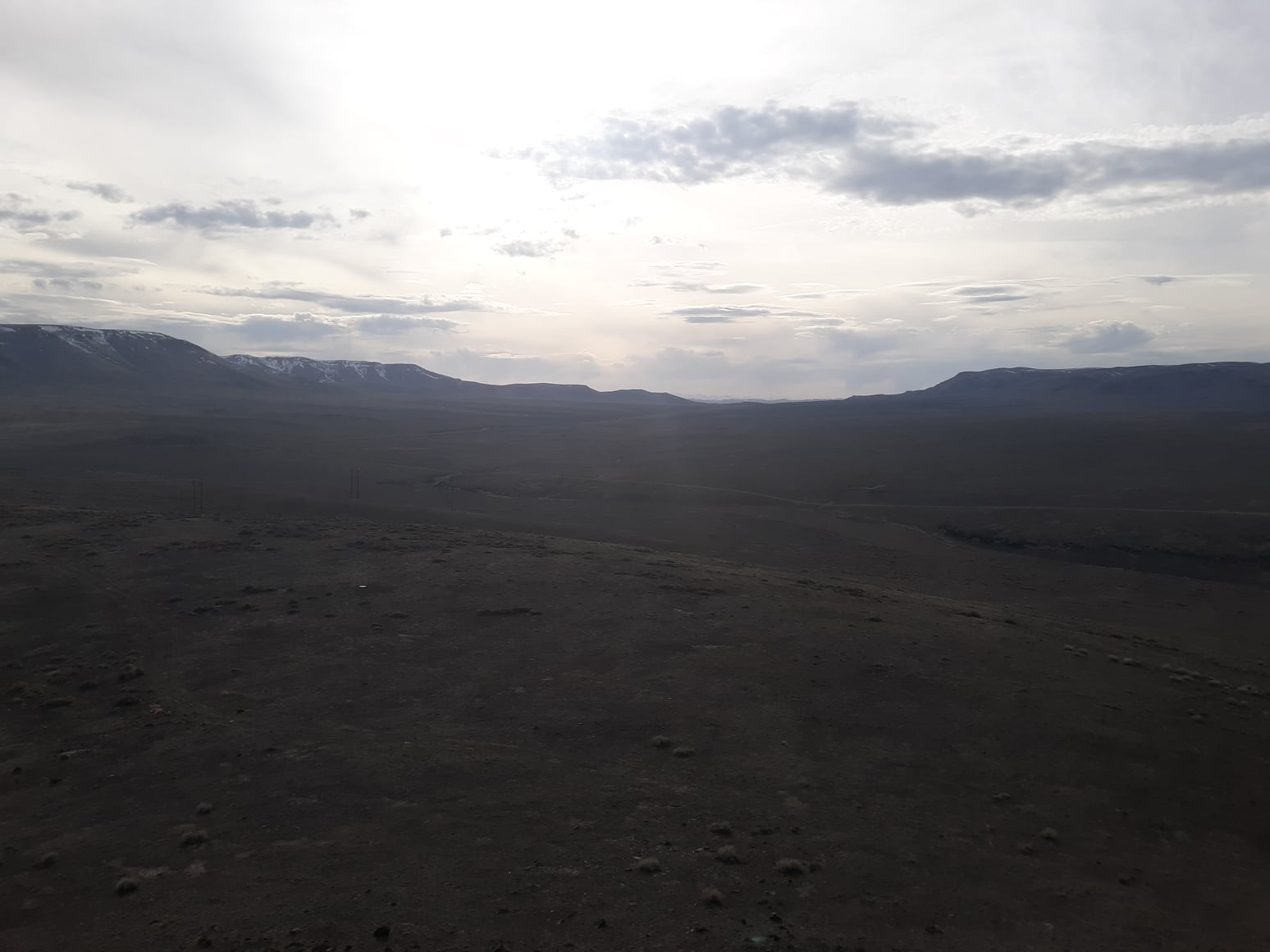Sentinel Rock, a naturally-formed stone tower, stands at Thacker Pass’ eastern entrance. The day before Easter, Max Wilbert and I accompanied Fort McDermitt Paiute and Shoshone tribal members Daranda Hinkey, her father Day, and Eddie Smart to Sentinel Rock. We had heard that Daranda, Day, and Eddie’s ancestors had gathered at Sentinel Rock for generations. And, sure enough, as we climbed up to Sentinel Rock, the ground was covered with glittering shards of obsidian left over from countless efforts to create arrowheads and other tools.
As we ascended Sentinel Rock, through rabbit brush and volcanic rocks, I pondered how many generations of humans must have sat on the rocks I was climbing over. I imagined these people watching the surrounding lands for deer and antelope herds while fashioning arrowheads. I heard the excitement in ancient voices as they strategized for the upcoming hunt. I tasted the trout they pulled from the nearby stream and cooked with the delicious wild onions we found growing around Sentinel Rock. I sensed the joy community after community shared as they gathered here century after century to face east, the direction Day explained was the Paiute way to pray and sing.
The joy vanished when I crested the top of Sentinel Rock. Daranda asked if I could picture a gaping open pit lithium mine in the land we were gazing at.
Thacker Pass stretched out before me. I saw all of her. I saw her strong shoulders, the tawny and auburn Montana mountains in the north. I saw her abundant hips, the tall, brown Double H mountains in the south. I saw the sagebrush forming her sylvan, silver skin rippling over her ridges and draws. I saw the fierce light in her eyes reflected in the powerful spring slant of afternoon sun.
I also saw how exposed, how vulnerable Thacker Pass was.
As this realization settled in, Thacker Pass said I’ve always been this vulnerable. I’ve always been here, exposed, giving myself to everyone who comes to me. But, no one before has ever wanted to destroy me.
Her voice turned into images. The seasons cycled over Thacker Pass. The shadows grew and the wind turned chill. Heavy snows fell. Insects died. Snakes retreated into the earth. Mule deer and antelope chased warmth towards the basin floor. Thacker Pass fell into winter’s temporary death.
But, then the sun grew stronger. The snow melted. The creeks swelled. Insects emerged from larvae. Snakes, their quick tongues flicking at the sunlight finding its way into their dark rooms, ventured forth. Mule deer and antelope climbed back up the Pass to find young, green graze. Thacker Pass showed me how she rose from her temporary death as she had forever.
I was raised Catholic and I could not ignore the Easter imagery in these visions. Though I was raised Catholic, the land is now my goddess. And, at a time when the Christian world celebrated the one-time resurrection of Jesus Christ, Thacker Pass – with the rest of the land – has risen from the dead every year forever.
I began to cry softly, hoping no one noticed, when I pictured what Lithium Americas’ open pit mine would do to Thacker Pass. I knew that, if the mine was constructed, Thacker Pass – who had resurrected herself countless times to give life to so many – would never rise from the dead again.

I really admire and respect your writing about issues dear to me. When I read your posts it touches my heart. It is nice to see the compassion from the heart in what you write.
I am Grateful and can relate to how you were raised. I was blessed to be raised with my great grandmother on my reservation. My father was the catholic who made sure we had those teachings. I was blessed again and more to have my American Indian teachings.
As we learn to honor our surroundings some of us can relate more than others. Your work is appreciated. Thank you…
I when to visit Thacker Pass and again I’m in tears remembering all of her beauty.
Thank you for your endless work to protect Thacker Pass.
And I too appreciate you .
Beautiful words Lifefree